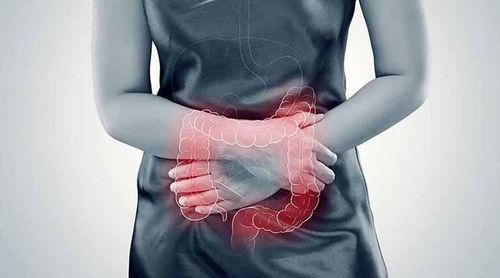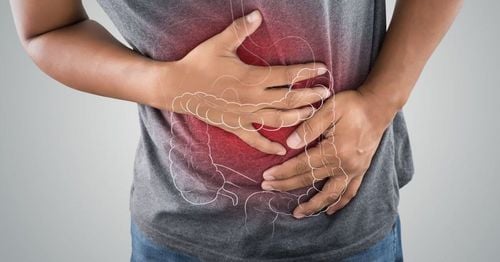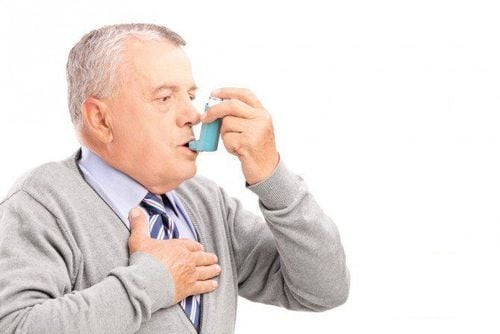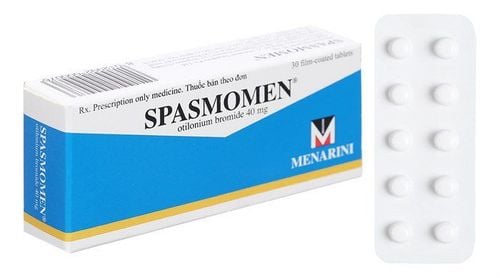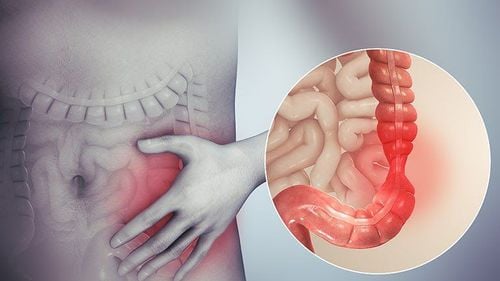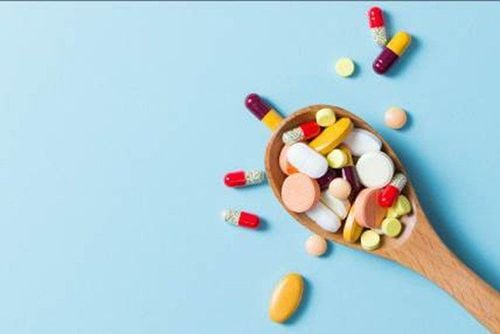This is an automatically translated article.
Posted by Doctor Mai Vien Phuong - Department of Medical Examination & Internal Medicine - Vinmec Central Park International General Hospital
The goal of pharmacological treatment of microscopic colitis is to improve symptoms while minimizing side effects. Before starting drug treatment, it is important to eliminate any medications that may be contributing to symptoms.
1. Management and treatment goals
Quality of life is proportional to disease activity in patients with microscopic colitis. Clinical remission is not always associated with histological remission and relapses are common. The goal of drug treatment is to improve symptoms while minimizing side effects. Before starting drug treatment, it is important to eliminate any medications that may be contributing to symptoms. Next, the related conditions need to be managed properly.
Dietary changes are helpful in patients who notice an association between certain foods. However, patients with isolated microscopic colitis, sans celiac disease, do not respond adequately to dietary gluten withdrawal.
Symptomatic treatment with antidiarrheal drugs such as loperamide, bismuth colloid, cholestyramine, sulfasalazine, and mesalamine may be added if diarrhea is not controlled. These patients failed to require systemic steroids, but they had a high chance of relapse after steroid discontinuation. Budesonide is more effective and has fewer side effects. Oral budesonide is first-line therapy for remission of microscopic colitis 40 with more than 80% of patients in clinical and histological remission.
2. Treatment of microscopic colitis
According to the European consensus on status colitis, the indication for treatment depends on the severity of the symptoms. The goal of treatment is to achieve clinical remission and improve the patient's quality of life. For patients with frequent relapses, maintenance of response to treatment is essential. However, the criteria for histopathological remission are still inconsistent and controversial in their use as a criterion of response to treatment.
3. European consensus recommendations for the treatment of microscopic colitis:
As recommended in the European microscopic colitis consensus:
Need to stop smoking and drugs that may be risk factors for the onset of the disease Mild disease: treat with antidiarrheal drugs and/or cholestyramine Active stage disease: budesonide is used for 6-8 weeks, then can be maintained at a low dose or intermittently when there is a relapse. Supplementation of calcium and vitamin D is required during long-term budesonide therapy to prevent osteoporosis. In case of unresponsiveness to budesonide: if mild, cholestyramine/bismuth/loperamide or combination can be used. In more severe cases and with a low risk of adverse events (young age, no comorbidities), anti-TNF therapy may be considered. Maintenance therapy with immunomodulators azathioprine or 6-mercaptopurine may be considered. Surgery is the last option when the patient does not respond to all medical treatments. 3.1. Avoiding Risk Factors This is the first step in the management of microscopic colitis. It is necessary to discuss with the patient to explain the relationship between smoking, use of certain drugs and disease onset and progression so that appropriate adjustments can be made. Drugs that have been identified as risk factors such as NSAIDs, proton pump inhibitors, selective serotonin reuptake inhibitors, statins, or beta-selective agents should be discontinued until symptoms improve.
3.2. Budesonide Of the drugs currently used for treatment, budesonide is the only one that has been shown to be effective in randomized, controlled clinical trials. This is a corticosteroid that acts locally, is metabolized by the liver, and has little systemic effects. Several studies have shown an effective short- and long-term clinical response of budesonide compared with placebo as well as an improvement in histopathology. The rate of drug discontinuation due to undesirable effects was 4.4%. The recommended dose of budesonide is 9 mg/day and used for 6 to 8 weeks to achieve remission of collagen fibrillation. The clinical effect can be seen after 2 weeks of treatment and the patient's quality of life is clearly improved after 6 weeks. A clinical trial compared the efficacy of budesonide 9 mg/day orally, mesalazine 3 g/day orally and placebo for 8 weeks in patients with collagen dysplasia. Results showed that budesonide was more effective than both mothersalazine and placebo in achieving remission.
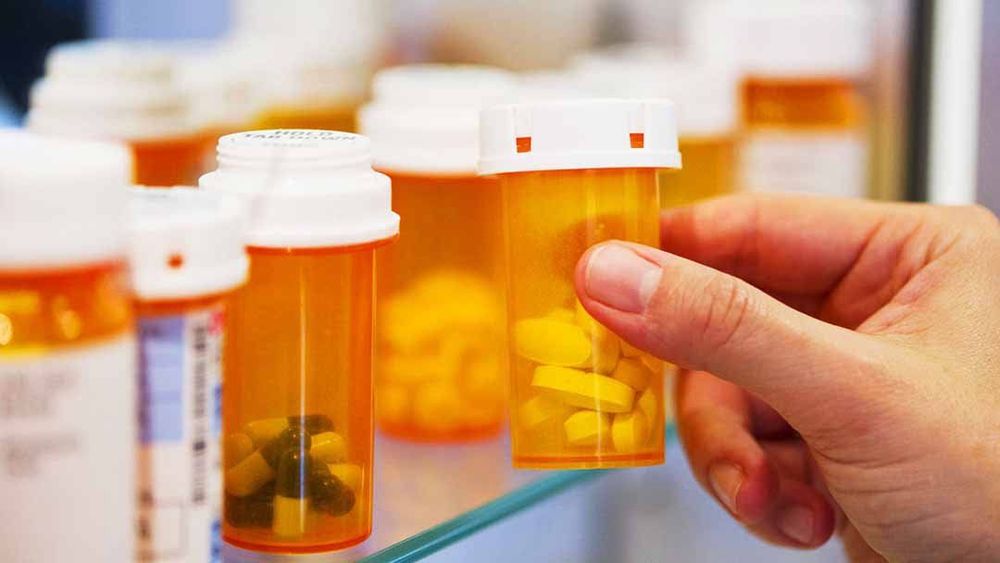
For lymphocytic colitis, the rate of clinical remission and histopathological improvement was also significantly higher than placebo (86% vs 48%, 73% vs 31%). During long-term follow-up, patients with relapse may still respond to budesonide re-administration. Relapse rates after stopping budesonide have been reported to range from 40 to 81% and can occur as early as 2 weeks after stopping treatment. Risk factors for relapse include older patients (>60 years), long duration of disease progression (>12 months), and high frequency of daily bowel movements (>5 times/day). Maintenance therapy with low doses of budesonide may improve symptoms and quality of life in some patients. The maintenance dose is 4.5 mg/day and in some cases can be increased to 6 mg/day.
4. Some other treatment options
Probiotics: Of the clinical trials involving probiotic efficacy for positional colitis, only one clinical trial using Boswellia serrata demonstrated clinical improvement after 6 weeks. Antidiarrheals: Several studies have shown the efficacy of loperamide in improving clinical symptoms, but none have demonstrated efficacy in achieving remission with maintenance therapy. Cholestyramine is widely used in gastritis and is effective in cases of bile acid malabsorption. Bismuth subsalicylate: This is a drug with mild anti-inflammatory, mucosal and antibacterial effects, safe, easily tolerated and initially shown to be effective in improving symptoms when using 262mg tablets for 8 weeks. Mesalazine: In a clinical trial in patients with microscopic colitis, masalazine 2.4 g/day with or without cholestyramine 4 g/day was used for 6 months. The rates of achieving clinical remission and histopathological improvement were 85% in patients with lymphocytic colitis and 91% in patients with collagenous colitis, particularly in the combination therapy group. However, when compared head-to-head with budesonide and placebo, mesalazine was not effective. Immunomodulators: Azathioprine and 6-mercaptopurine may be the treatment of choice in patients with severe symptoms who do not respond to or are intolerant to budesonide. The recommended dose is similar to that of budesonide. in the treatment of IBD diseases. Probiotics: Currently, no randomized controlled clinical trials have been conducted to evaluate the true efficacy of anti-TNFα in the treatment of refractory gastritis. However, several case reports and case series have shown a response to treatment with infliximab or adalimumab.
5. Conclusion
Both lymphocytic colitis and collagenous colitis can be classified under the common name of microscopic colitis. Clinical features include chronic, non-haemorrhagic, watery diarrhea and histological findings of lymphocyte proliferation or collagen thickening in the colonic mucosa. These diseases are thought to be of autoimmune origin and have been linked to celiac disease, thyroid disease, and diabetes. The cause is still unclear. The goal of treatment remains to eliminate aggravating factors and control symptoms.
Vinmec International General Hospital is a high-quality medical facility in Vietnam with a team of highly qualified medical professionals, well-trained, domestic and foreign, and experienced.
A system of modern and advanced medical equipment, owning many machines in the world, helps to detect many difficult and dangerous diseases in a short time, supporting the diagnosis and treatment of doctors effectively best. The hospital space is designed according to hotel standards, giving patients comfort, friendliness and peace of mind.
Please dial HOTLINE for more information or register for an appointment HERE. Download MyVinmec app to make appointments faster and to manage your bookings easily.
References
Dao Van Long, Dao Viet Hang. Autoimmune diseases of the gastrointestinal tract. Medical Publishing House 2. Lindstrom C.G. (1976). “Collagenous colitis” with watery diarrhea--a new entity? Pathol Eur, 11(1), 87-89. 3.Read N.W., Krejs G.J., Read M.G. et al. (1980). Chronic diarrhea of unknown origin. Gastroenterology , 78(2),264-271. 4.Lazenby A. J., Yardley J.H., Giardiello F. M. et al. (1989) Lymphocytic ("microscopic") colitis: a comparative histopathologic study with particular reference to collagenous colitis. Hum Pathol, 20(1), 18-28. 6.Park Y.S., Baek D.H., Kim W.H. et al. (2011). Clinical Characteristics of Microscopic Colitis in Korea: Prospective Multicenter Study by KASID Gut Liver, 5(2), 181 -186. 7.Misra V., Misra S.P., Dwivedi M. et al. (2010) Microscopic colitis in patients presenting with chronic diarrhea Indian J Pathol Microbiol, 53(1), 15-19.





